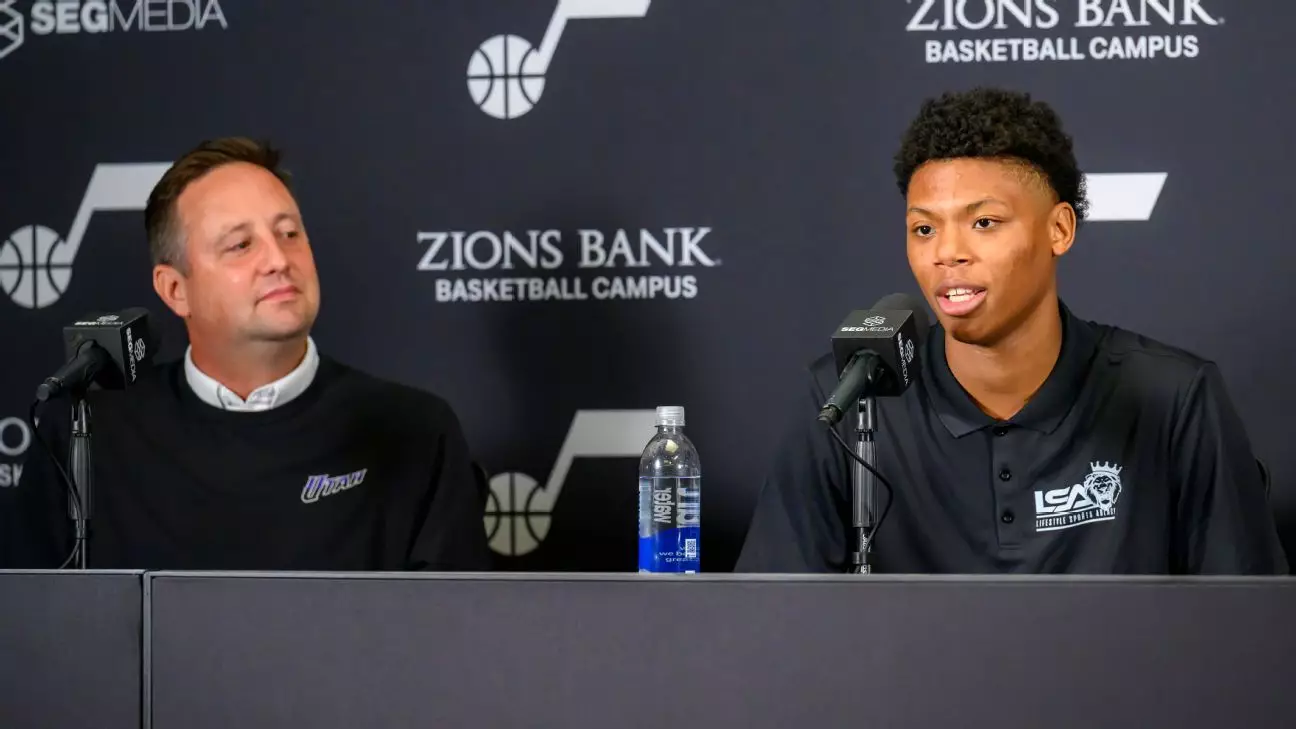Ace Bailey’s journey to the Utah Jazz, despite a strong pre-draft reputation, reveals a troubling disconnect in how NBA teams evaluate and value young talent. Selected fifth overall, Bailey’s slip from a projected top-three pick to No. 5 wasn’t just about pure talent—it was about perception, attitude, and the increasingly transactional nature of basketball scouting. The fact that Bailey resisted workouts with potential suitors, even declining the Jazz’s invitation before the draft, sent a clear signal to many that he might be difficult to work with or lacked full commitment. Yet, despite this, the Jazz gambled on him—not merely for what he brings on the court, but because the franchise saw beyond the surface behavior that scared others off. This gamble, while bold, underscores the inconsistency and subjectivity inherent in the draft process.
Bailey’s draft experience highlights an uncomfortable truth about modern NBA recruitment: the line between talent potential and character judgement is often blurred or wielded carelessly. Fans and scouts alike tend to equate a player’s willingness to cooperate with their maturity and long-term value, but this can often undervalue genuine skill and heart. The same passion or caution that comes across as obstinacy can also be a sign of a player protecting their mental and emotional well-being. In other words, the scouting process that prioritizes player “brand” over nuanced personality sometimes sacrifices the very talent the league needs to flourish.
The Jazz’s Risk and Reward Calculation
Utah Jazz President of Basketball Operations Austin Ainge’s enthusiasm for Bailey and his fellow rookies indicates a franchise ready to embrace risk and reward pragmatically. By selecting Bailey alongside Walter Clayton Jr. and John Tonje—all touted as versatile, high-potential scorers—the Jazz are banking on a cultural and developmental shift. From Ainge’s perspective, these players’ defensive capabilities and offensive flexibility suggest they can shape a multifaceted team, essential for contemporary NBA success.
But this enthusiasm must be tempered by realism. Bailey’s strengths—his offensive versatility from Rutgers, where he averaged nearly 18 points and over 7 rebounds—are well documented. Yet, scouts flagged significant weaknesses: scoring efficiency, ballhandling, passing, defensive intensity, and a lack of maturity. These are not trivial concerns. The Jazz’s challenge will be nurturing Bailey in a system that demands consistency and mental toughness. This is more than a question of on-court development; it’s about guiding a young player who has already been characterized as somewhat diffident during the pre-draft process.
Accountability and Personal Growth in the Spotlight
Bailey’s public statements exude humility and determination. He emphasizes his work ethic and acknowledges imperfections—“God didn’t put us here to be perfect”—which resonate well in a league where personal growth can make or break careers. Yet there is a tension between his unapologetic stance about skipping workouts and his commitment to proving detractors wrong. The truth is, trust in the NBA is two-way: teams must trust players to be engaged fully, and players in turn must feel respected and valued for who they are.
The polarized reactions to Bailey’s pre-draft conduct also reflect larger societal debates around agency and professionalism. Young athletes increasingly seek to control their narratives and protect themselves in high-pressure environments. However, the rigidity of traditional scouting opposes such self-authorship, often penalizing players who deviate from the norm. Bailey’s case could serve as a litmus test for whether NBA franchises evolve their approaches to player evaluation, balancing respect for individuality with the desire for dependable talents.
A Cautionary Tale for Modern Scouting
This episode exposes how rankings and mock drafts, often considered gospel by fans and media, can misrepresent an athlete’s true value. Bailey was a consensus top-three talent based on skill, but his slide revealed how important off-court variables have become. NBA executives and scouts must ask themselves how much weight personal conduct should carry relative to raw ability—and whether they are fostering environments conducive to player growth or simply weeding out those who don’t fit a particular mold.
The Jazz made a calculated bet that Bailey’s potential outweighs the risks posed by his unorthodox pre-draft approach. Time will tell if this faith is well placed, but the broader lesson is that the league needs a more nuanced, compassionate framework for evaluating and nurturing young talent—one that recognizes the complex realities these players face beyond highlight reels and stats sheets. Until then, we risk undervaluing players who don’t fit the conventional mold but whose value may be greater than anyone anticipated.


Leave a Reply